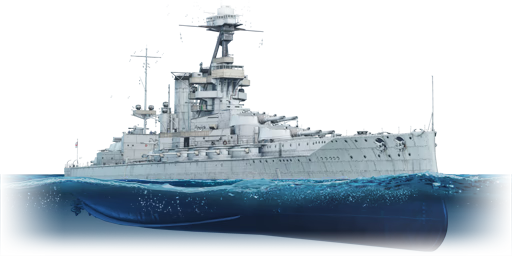HMS Marlborough was the second of four Iron Duke-class battleships, built for the Royal Navy beginning in January 1912. She would be launched later that same year in October 1912, and commissioned in June 1914, being completed in time for the outbreak of the Great War. The only major action that Marlborough would see was in the famous Battle of Jutland, where she engaged multiple battleships and cruisers, notably hitting SMS Wiesbaden with (most likely) three shells, knocking the cruiser out of action until it sank a few hours later. During this time she sustained a torpedo hit, which while not immediately threatening, restricted the ship to 12 kn until she was later repaired. She would see more sorties after her repairs were complete, but none resulted in combat. After the end of the war, she served various roles for an additional 14 years before being stricken and sold for scrap in 1932.
Introduced in Update "Ground Breaking", HMS Marlborough is a direct upgrade over her predecessor, HMS Orion, with an improved armour layout. As with her predecessor, Marlborough features ten 13.5 inch guns with incredibly powerful HE shells that can deal good damage even against more advanced battleships, while the other shell choices are modestly effective against her equivalents. However, the 13.5 inch guns suffer from very long shell flight times, resulting in them being less accurate against evasive manoeuvres; this is further exacerbated by the limited range of her secondary 6 inch guns, which makes ranging a target beyond 12 km difficult. In addition, much like her predecessor, the Marlborough remains slow and lacks anti-aircraft defence to fend off enemy aircraft.














